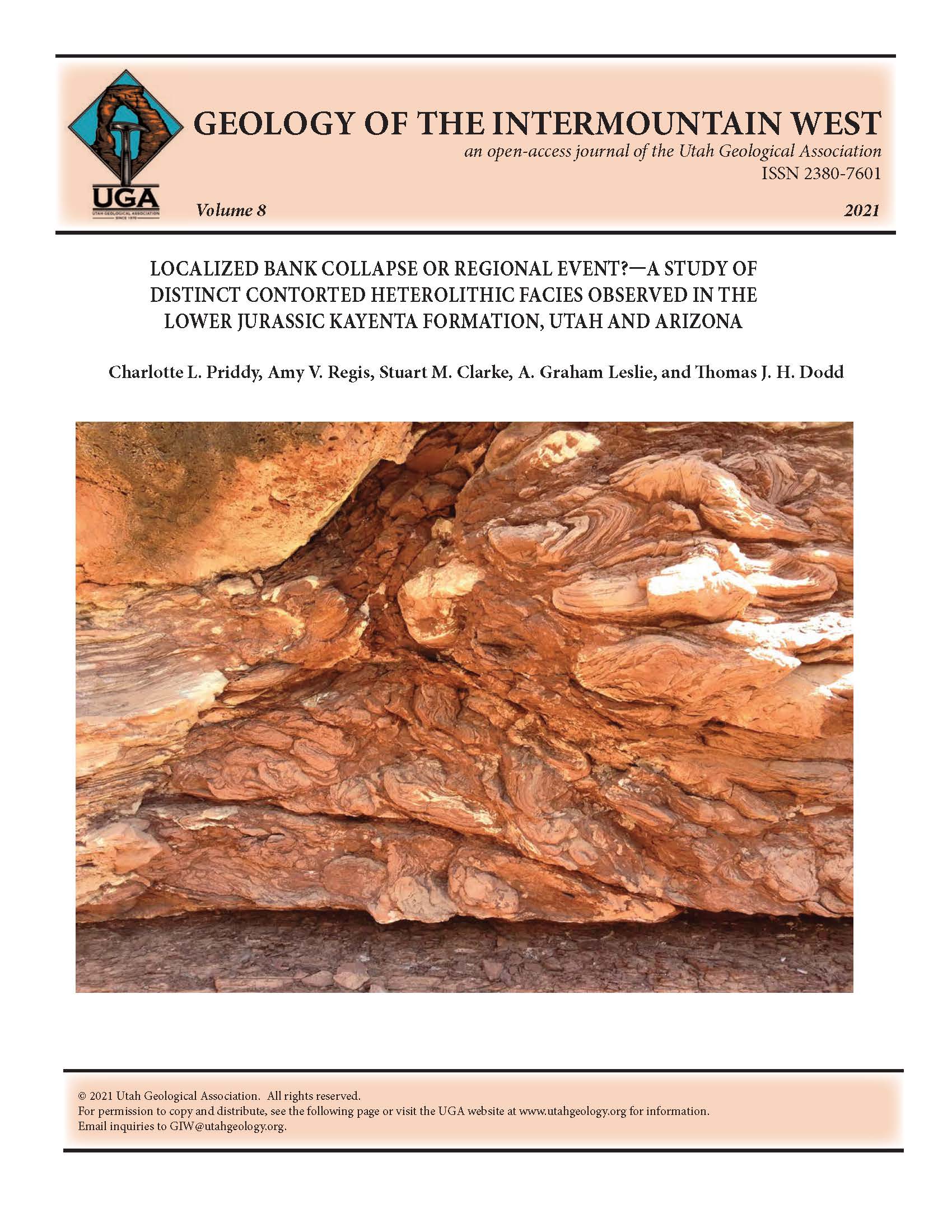Localized bank collapse or regional event?
A study of distinct contorted heterolithic facies observed in the Lower Jurassic Kayenta Formation, Utah and Arizona
Abstract
This study presents a detailed synopsis of the sedimentological and structural features displayed within an underdescribed enigmatic facies observed in the basal Lower Jurassic Kayenta Formation of the Colorado Plateau. The facies comprises pebble to cobble-sized clasts of fine to medium-grained crossbedded sandstone with mud-draped and deformed foresets, as well as clasts of parallel-laminated but highly contorted siltstone and mudstone, supported in a silty to sandy matrix. The deposits are internally deformed and show both ductile and brittle structures in close spatial proximity, with a consistent and pervasive westdirected sense of shear. The facies occurs consistently within the same approximate stratigraphic interval, at or near the base of the Kayenta Formation. It is, however, observed only at four localities, distributed in a crudely linear arrangement parallel to the Utah-Idaho trough, despite extensive studies of outcrops of the same stratigraphic interval widely distributed across both Utah and Arizona. This study interprets the depositional processes as that of a partially subaerial debris flow with depositional events perhaps taking place during the waning period after ephemeral stream activity. The clast morphology and composition suggests a local source for the sediment entrained within the flow, and a limited transport distance. All of these observations are difficult to reconcile with the consistency of the stratigraphic interval in which the facies occur, or with the regional distribution of preserved examples. Consequently, this study discusses the potential for a common and time-equivalent triggering mechanism across all examples, which may have regional significance in the Jurassic evolution of the region.





